Disclosure: This article contains affiliate links. We may earn a commission from purchases at no extra cost to you, which helps our travel content.
There's something almost orchestral about the way a well-run hawker center operates in Singapore. The synchronized movements of vendors, the layered aromas that build and evolve as you navigate the stalls, the perfect harmony of flavors that have been refined over generations. Having spent three decades orchestrating high-end hotel kitchens across four continents, I find myself drawn repeatedly to Singapore's hawker culture—not just for the extraordinary food, but for the brilliantly efficient systems that deliver culinary excellence at remarkably accessible prices. On my most recent layover (Singapore's Changi remains, in my estimation, the world's most thoughtfully designed airport), I dedicated 24 hours to exploring Chinatown's hawker centers and surrounding food establishments. What follows is my methodical—yet deeply personal—guide to experiencing this gastronomic paradise, stall by stall, dish by dish.
Morning Ritual: Breakfast at Maxwell Food Centre
I begin my culinary expedition at 7:30 AM, when Maxwell Food Centre is just stirring to life. The morning light filters through the open-air structure, illuminating the meticulous preparation rituals of vendors who've been perfecting their craft for decades. My first stop is always Fuzhou Oyster Cake (#01-05) where Mr. Teo crafts these crispy UFO-shaped delicacies stuffed with oysters, minced pork, and cilantro. The textural contrast between the crisp exterior and soft, savory interior exemplifies what I consider the hallmark of exceptional street food: complexity achieved through simplicity.
Next, I make my pilgrimage to Tian Tian Hainanese Chicken Rice (#01-10/11), which opens at 10 AM. Even Anthony Bourdain declared this the definitive version of Singapore's national dish, and as a chef, I appreciate their technical precision. The chicken is poached at exactly the right temperature to maintain its silky texture, while the rice—fragrant with chicken stock, ginger, and pandan leaves—demonstrates how a seemingly simple grain can become transcendent through proper technique.
To document these culinary treasures, I've found my compact camera invaluable. Its low-light capabilities capture the vibrant colors and textures of the food without disturbing other diners with an obtrusive flash or bulky equipment. After years of smartphone photography, the difference in image quality is remarkable, especially when capturing the subtle gleam on that perfectly poached chicken skin.
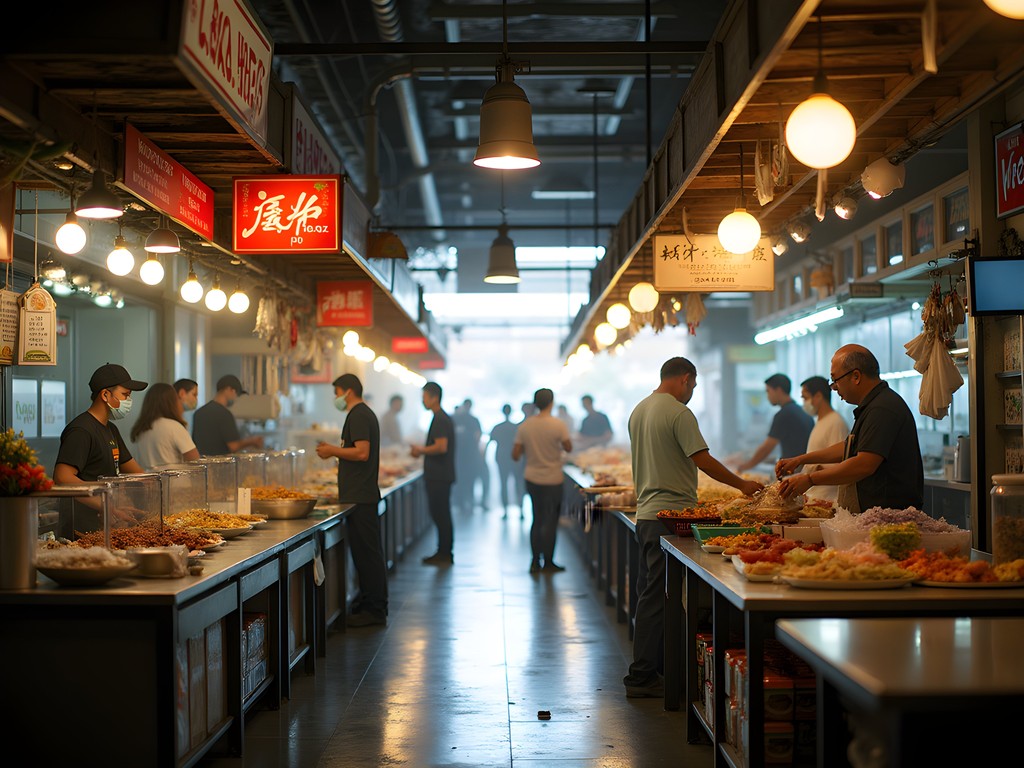
💡 Pro Tips
- Arrive at Maxwell Food Centre before 8 AM to beat the crowds and watch vendors' morning preparation rituals
- Always carry small Singapore dollar notes as many hawker stalls don't accept cards
- Look for queues of locals—they're the most reliable indicator of quality
Midday Exploration: Chinatown Complex Food Centre
By noon, I transition to the sprawling Chinatown Complex Food Centre, Singapore's largest hawker center with over 260 stalls across two levels. The ground floor houses the wet market—a fascinating study in supply chain efficiency that I always recommend visiting before heading upstairs to the food stalls. Here, the connection between raw ingredients and finished dishes becomes evident, a relationship that's increasingly obscured in Western dining culture.
Upstairs, I make my way to Lian He Ben Ji Claypot Rice (#02-197/198), where the queue often stretches 30 minutes deep. The wait provides time to observe their system: rice begins cooking in individual claypots over charcoal fires, with meats and vegetables added at precisely timed intervals. When served, the slightly charred rice at the bottom (known as tutong) offers a delightful textural contrast that speaks to the beauty of slow cooking methods.
For those with limited time, I recommend Hong Kong Soya Sauce Chicken Rice and Noodle (#02-126), operated by Chef Chan Hon Meng—the world's first Michelin-starred hawker. His soya sauce chicken represents the pinnacle of technique: perfectly lacquered skin, tender flesh, and a sauce that balances sweetness, salinity, and umami with remarkable precision.
To navigate these labyrinthine food centers efficiently, I rely on my pocket guidebook. Despite my numerous visits, having a compact reference with maps and stall numbers proves invaluable, particularly when specific vendors relocate or when my jetlagged brain fails to recall exact locations.
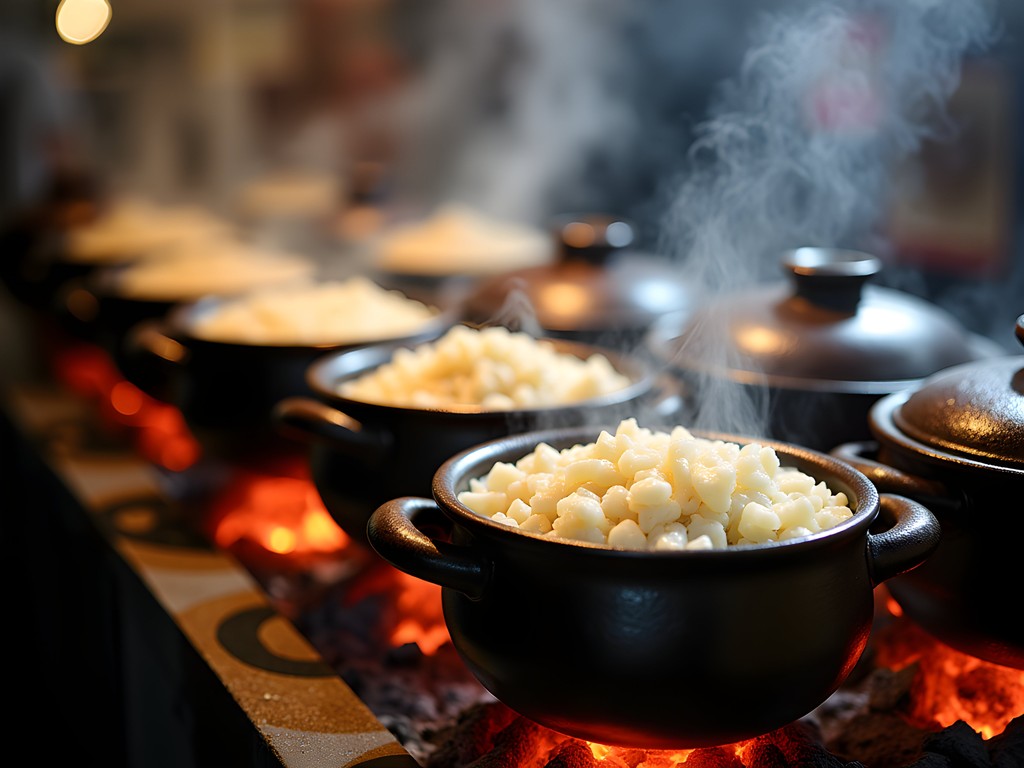
💡 Pro Tips
- Visit the wet market on the ground floor first to understand the ingredients before enjoying the prepared dishes upstairs
- Use the official Chinatown Complex Food Centre directory boards to locate specific stalls by number
- Order different dishes with fellow travelers and share to maximize the variety of foods you can sample
Afternoon Refreshment: Traditional Kopi Culture
By mid-afternoon, Singapore's humidity typically necessitates a strategic retreat. I find myself drawn to the traditional kopitiam (coffee shops) that represent another fascinating system of cultural preservation. Nanyang Old Coffee at 268 South Bridge Road offers a respite from both the heat and the sensory overload of the hawker centers.
The traditional kopi (coffee) preparation method here is a marvel of efficiency developed during British colonial times. Robusta beans are roasted with sugar and margarine, ground to precise specifications, then brewed in cloth filters that resemble sock puppets—hence the local nickname 'sock coffee.' The resulting brew is strong, aromatic, and served with condensed milk that cuts through the bitterness.
I particularly recommend ordering kopi-C kosong—coffee with evaporated milk but no sugar—which allows you to appreciate the caramelized notes from the roasting process without excessive sweetness. Pair this with kaya toast, a simple yet perfect combination of charcoal-grilled bread spread with coconut jam and served with soft-boiled eggs.
This afternoon ritual provides not just refreshment but a window into Singapore's unique cultural position at the crossroads of East and West. The coffee preparation shows clear European influence, while the service style and flavor profiles remain distinctly Southeast Asian. As someone who has spent a career in both Western and Asian kitchens, these hybrid culinary traditions fascinate me endlessly.
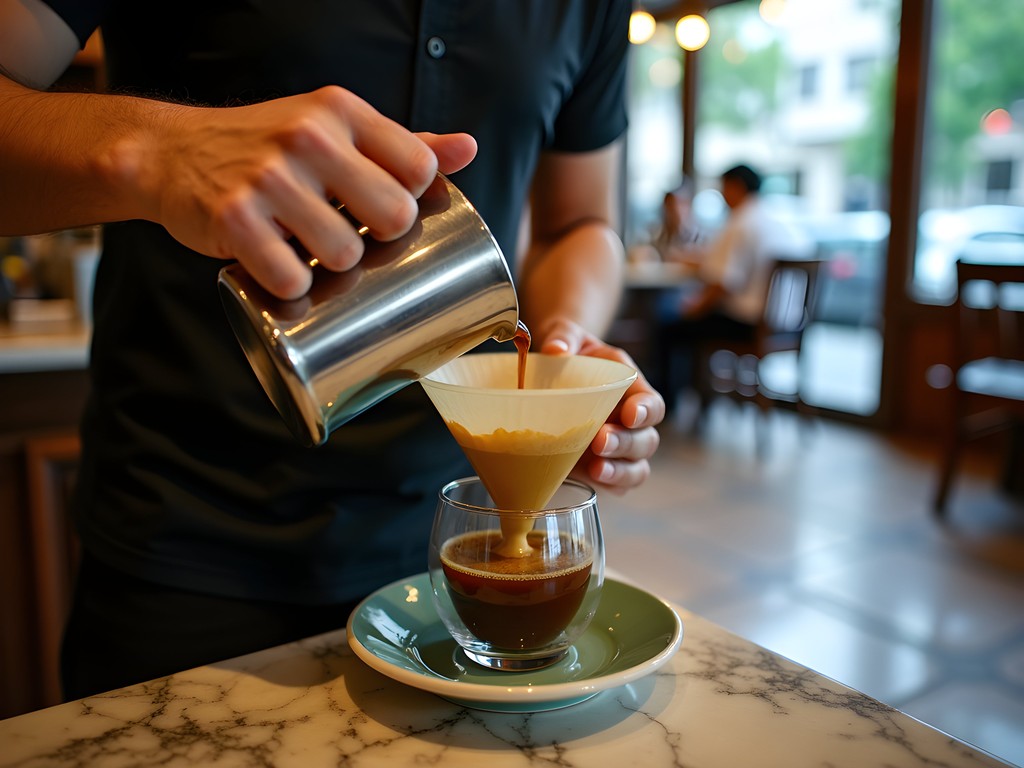
💡 Pro Tips
- Learn the kopi ordering system: kopi (with condensed milk), kopi-C (with evaporated milk), kosong (no sugar), gau (strong), po (weak)
- Dip your kaya toast into the soft-boiled eggs mixed with soy sauce and white pepper for the authentic experience
- Visit between 2-5 PM to avoid the morning and lunch rushes
Evening Feast: Smith Street and Ann Siang Hill
As evening approaches, I make my way to Smith Street (officially named Chinatown Food Street), where the road transforms into an open-air dining experience as stalls extend into the pedestrianized street. Protected by a glass canopy—an engineering solution to Singapore's frequent afternoon showers that doesn't compromise ventilation—this area represents the city-state's pragmatic approach to urban planning.
Here I seek out Geylang Claypot Rice, whose satellite location offers their famous dish without the cross-town journey to their original stall. While purists might insist on visiting the original location, I find the consistency across their operations impressive—a testament to the systems they've developed to maintain quality while scaling operations.
For those seeking seafood, the chili crab at Chinatown Seafood Restaurant merits attention. While not as renowned as the East Coast Park seafood centers, their version of this national dish offers an excellent balance of sweet, spicy, and savory notes in the tomato-chili sauce, with crab that's invariably fresh and perfectly cooked.
As night deepens, I venture to Ann Siang Hill, where traditional shophouses have been transformed into cocktail bars that offer contemporary interpretations of Singapore's culinary heritage. Native Bar on Amoy Street particularly impresses with cocktails incorporating regional ingredients like laksa leaf, betel nut, and jackfruit.
To navigate between these locations comfortably in Singapore's tropical climate, I've found my cooling towel indispensable. Simply wet it, wring it out, and drape it around your neck for hours of cooling relief—essential for maintaining stamina during extended food explorations in high humidity.
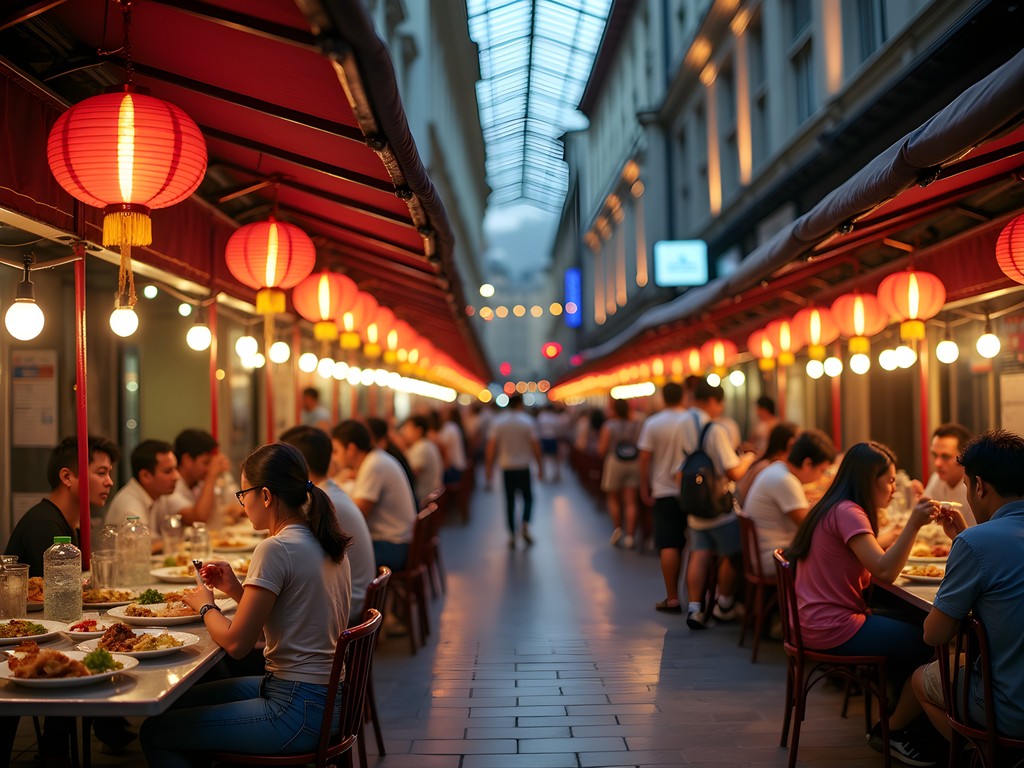
💡 Pro Tips
- Visit Smith Street after 6 PM when all stalls are operating and the atmosphere is most vibrant
- Order chili crab with mantou buns to soak up the delicious sauce
- Bring a portable hand fan or cooling towel to combat the evening humidity while dining outdoors
Late Night Indulgence: Supper Culture
Singapore's 'supper' culture—late-night dining that stretches well past midnight—represents one of its most distinctive culinary traditions. For a chef accustomed to working late hours, this accessibility of quality food at all hours feels like a civilizational achievement worth celebrating.
Hong Lim Food Centre, while not technically in Chinatown proper, lies just at its edge and merits inclusion for its extended hours. Here, Ji Ji Wanton Noodle Specialist serves until the early morning, their delicate wanton wrappers and rich broth demonstrating that quality need not be compromised even at 2 AM.
For something sweeter, I return to Chinatown Complex to find Lao Ban Soya Beancurd (#02-110), whose silken tofu dessert achieves a texture that seems to defy physics—firm enough to hold its shape when scooped yet dissolving instantly on the tongue. The technical precision required reminds me of the finest French custards, though achieved through entirely different methods.
During these late-night explorations, I rely on my travel water bottle to stay hydrated. Its self-cleaning technology, which uses UV-C LED light to eliminate bacteria, gives me peace of mind when refilling at public water stations throughout Singapore. After years of buying plastic bottles while traveling, this sustainable solution has significantly reduced my environmental footprint while saving money in the long run.
These late hours also offer the opportunity to observe the remarkable cleaning systems that keep Singapore's hawker centers immaculate despite serving thousands of meals daily. The centralized tray return, segregated waste streams, and coordinated cleaning crews represent public health engineering at its finest—a subject that fascinates me almost as much as the food itself.
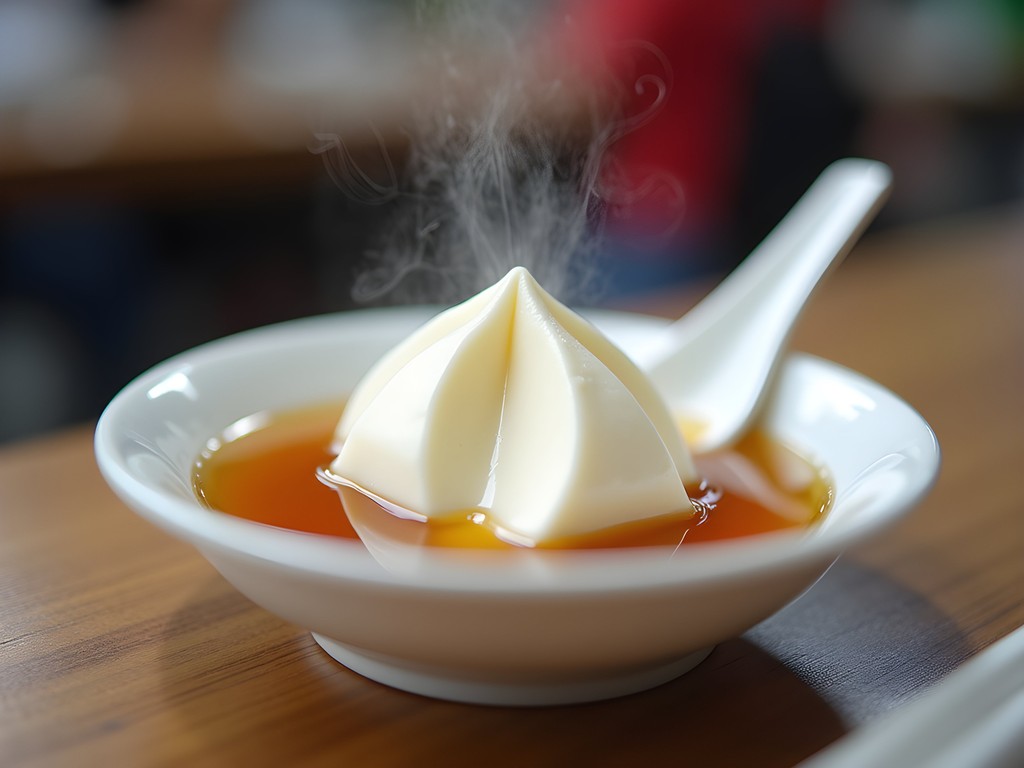
💡 Pro Tips
- Don't hesitate to eat late—many of Singapore's best food options are available past midnight
- Look for the 'SG Clean' certification at stalls, which indicates adherence to Singapore's strict hygiene standards
- Always return your tray to the designated collection points—it's both culturally expected and keeps the hawker centers functioning efficiently
Early Morning Finale: Traditional Breakfast at Ya Kun Kaya Toast
To complete my 24-hour circuit, I find myself at Ya Kun Kaya Toast on China Street as they open their doors at 7:30 AM. Founded in 1944, this institution represents Singapore's ability to scale traditional concepts without sacrificing authenticity—a balance I've strived for throughout my own culinary career.
Their kaya toast is served in precise rectangles, the bread grilled over charcoal to achieve a specific degree of caramelization before being spread with housemade coconut jam and sliced cold butter. Paired with soft-boiled eggs and strong kopi, it forms a breakfast that has remained essentially unchanged for generations.
What impresses me most is the consistency across Ya Kun's operations. Despite expanding to multiple locations throughout Asia, they've maintained the quality control systems that ensure each outlet delivers an identical experience. As someone who has implemented standardization protocols for international hotel kitchens, I recognize the operational excellence required to achieve this level of consistency.
As I savor this final meal of my 24-hour culinary marathon, I reflect on Singapore's unique position in global food culture. The hawker centers represent a solution to food security, cultural preservation, and community building that few other nations have achieved at this scale. The government's recent efforts to secure UNESCO recognition for hawker culture acknowledge what visitors have long understood: these are not merely places to eat but living museums of culinary heritage.
I leave with both a satisfied appetite and renewed professional inspiration. The systems thinking evident throughout Singapore's food landscape—from the supply chains of the wet markets to the precise workflows of the smallest hawker stalls—demonstrates that efficiency and tradition need not be opposing forces. They can, in fact, be complementary ingredients in a recipe for cultural sustainability.
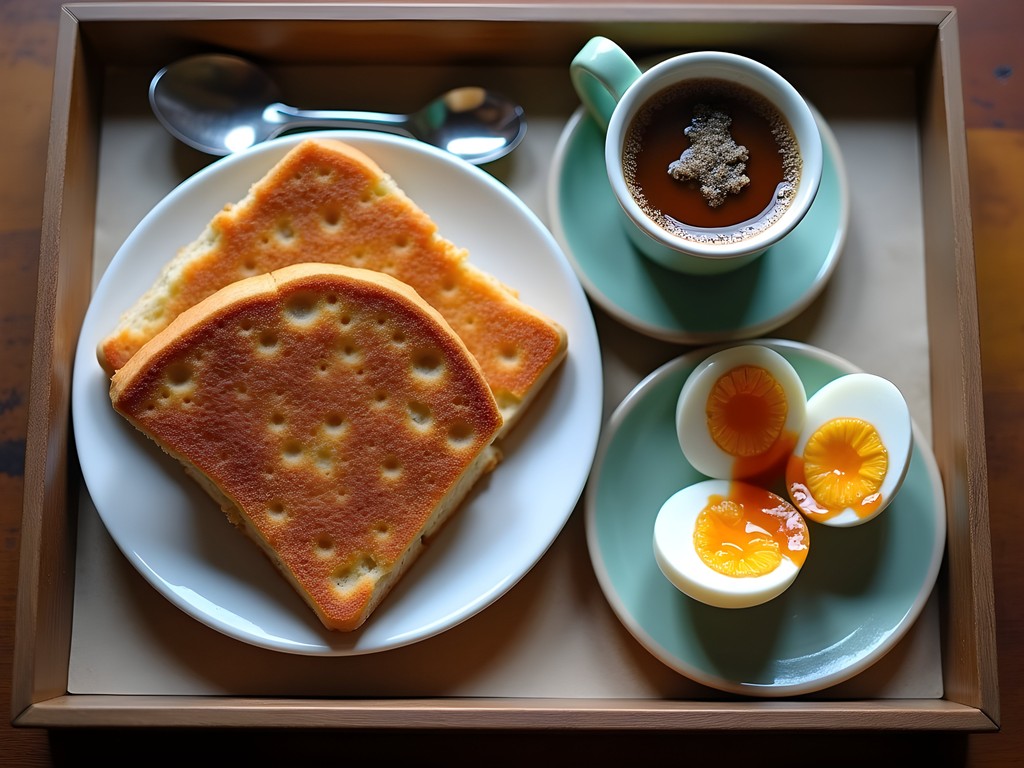
💡 Pro Tips
- Order the kaya toast set with soft-boiled eggs and kopi for the complete traditional breakfast experience
- Arrive early (before 8 AM) to avoid the office crowd rush
- Don't be shy about asking for an extra serving of kaya (coconut jam) if you enjoy its fragrant sweetness
Final Thoughts
Singapore's hawker centers represent one of humanity's great democratic achievements: making exceptional food accessible to everyone regardless of social status or wealth. In my travels across six continents, I've found few culinary traditions that combine technical excellence, cultural preservation, and affordability so seamlessly. For solo travelers particularly, hawker centers offer not just sustenance but a window into Singapore's multicultural soul and an opportunity to dine alongside locals from all walks of life. My advice? Bring an empty stomach, comfortable shoes, and a willingness to queue when necessary. The rewards—both gastronomic and cultural—will far outweigh any temporary discomfort from the heat or crowds. Singapore's Chinatown hawker scene isn't just about eating; it's about witnessing a living cultural system that has solved problems many Western cities still struggle with: how to preserve culinary heritage while adapting to modern urban constraints.
✨ Key Takeaways
- Singapore's hawker centers offer world-class cuisine at accessible prices, making them ideal for budget-conscious travelers
- Early morning and late night offer unique culinary experiences with fewer crowds
- Understanding the cultural context and ordering systems enhances appreciation of the food
- Chinatown's diverse hawker centers showcase Chinese, Malay, Indian and hybrid Peranakan cuisines in one compact area
📋 Practical Information
Best Time to Visit
year-round (indoor facilities provide shelter from rain and heat)
Budget Estimate
$30-50 SGD for a full day of eating
Recommended Duration
24 hours minimum, ideally 2-3 days to explore thoroughly
Difficulty Level
Beginner


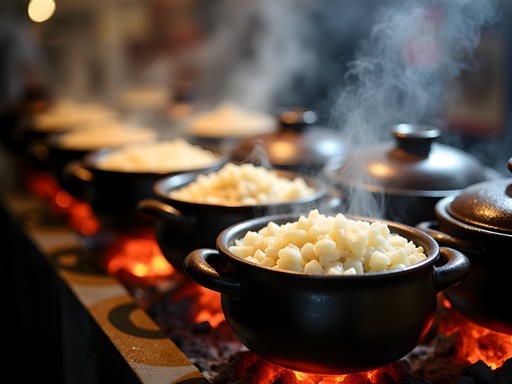
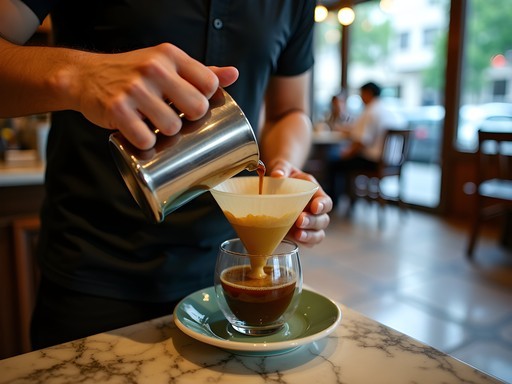
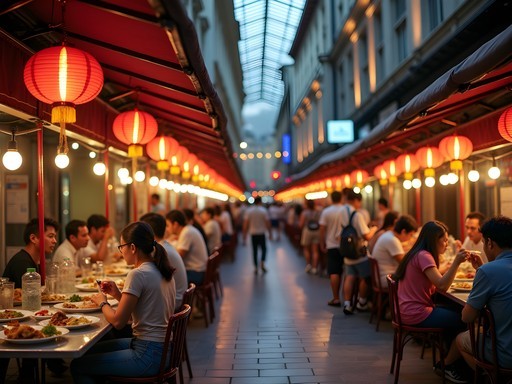

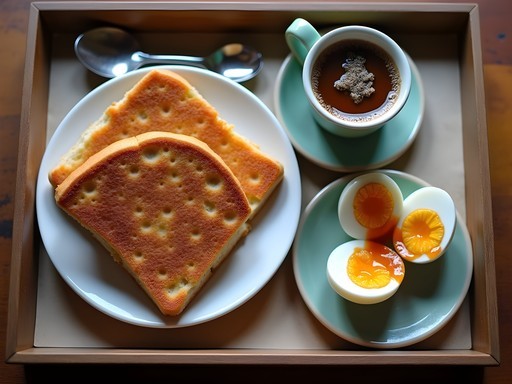








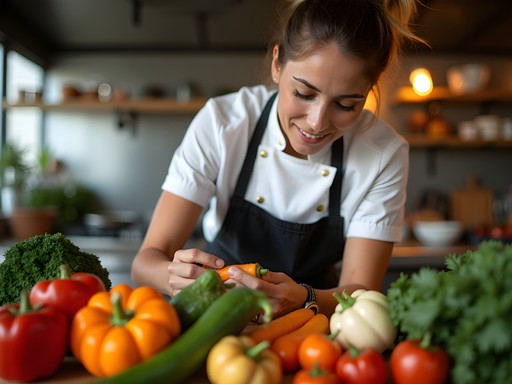

Comments
luckyfan
OMG I just got back from Singapore and did almost this exact route!! The kaya toast at Ya Kun Kaya Toast was LIFE CHANGING and I brought back three jars of kaya jam! I used my food tour guidebook to find some hidden gems too. The carrot cake (which isn't actually carrot or cake lol) at Chinatown Complex was my absolute favorite. Singapore hawker centers are seriously food heaven!!
nomadguide
This looks amazing! Is it possible to do this food crawl with dietary restrictions? I'm pescatarian and wondering if I'll still have enough options.
Amit Warren
Absolutely! Singapore hawker centers are fantastic for pescatarians. Look for the amazing chili crab, cereal prawns, fish soup, and vegetable dishes like sambal kangkong. Many Chinese Buddhist stalls also serve delicious vegetarian options. Just learn to say 'no meat please' ('bu yao rou' in Mandarin) and you'll be fine!
nomadguide
Thank you so much! That's super helpful. Can't wait to try the chili crab everyone raves about!
Haley Hamilton
Amit, your 24-hour food crawl is spot on! As a solo backpacker who's visited Singapore 4 times now, I've developed my own hawker center strategy: bring small bills (many stalls are cash-only), carry tissues (for claiming seats - local custom!), and always look for stalls with lines of locals. My secret find in Chinatown Complex is this tiny stall selling soon kueh (steamed rice dumplings) run by an elderly couple - it's on the outer edge near the Smith Street entrance. For first-timers intimidated by the options, I recommend joining one of the free walking tours that includes hawker center stops - great way to learn the etiquette and get recommendations from locals. Chinatown's hawker scene is truly one of those rare places where the food exceeds the hype!
Jean Wells
Amit, your hawker center strategy is spot on! I spent three weeks in Singapore last year documenting the disappearing hawker traditions, and Maxwell Food Centre was my daily breakfast ritual. One tip I'd add: the Chinatown Complex gets incredibly busy between 12-1:30pm. I found going slightly earlier (11:15am) meant shorter queues at the famous stalls. Also, don't miss Tong Heng bakery for traditional egg tarts as an afternoon snack - they're diamond-shaped unlike the round Portuguese-style ones elsewhere in Asia. The flaky pastry is sublime after a morning of heavy eating.
nomadguide
Jean, any specific stalls at Maxwell you'd recommend for a first-timer? I'm heading there in December and feel overwhelmed by all the choices!
Jean Wells
Absolutely! Don't miss Tian Tian Chicken Rice (the Michelin-recommended one), Zhen Zhen Porridge for comforting congee, and Fu Shun Shao La Mian for their roast meats. Go early as they can sell out!
photoblogger
Those photos of the laksa made me so hungry! Definitely saving this for my trip next month.
luckyfan
Same! I can almost smell the spices through the screen!
beachseeker7760
Is it easy to navigate these hawker centers if you don't speak any Chinese? Any tips for a first-timer?
wavemaster
Super easy! Almost everyone speaks English, and most stalls have pictures or English menus. Just point if you're unsure. And don't be afraid to ask locals for recommendations - Singaporeans love talking about food!
backpack_wanderer
Those food pics are incredible! Making me nostalgic for my trip last year!
travel_with_mei
Going to Singapore next month! Is one day really enough for Chinatown's food scene? Should I spread it over two days instead?
wintermood5539
Definitely do two days if you can! There's SO much to try and you'll want time between meals to digest lol
Taylor Moreau
I'd recommend two days as well. One day for Maxwell and Chinatown Complex, another for exploring the smaller establishments around Ann Siang Hill and Club Street. The latter transforms beautifully in the evening.
Taylor Moreau
Excellent guide, Amit. I've been to Singapore countless times for business and can confirm this itinerary hits all the right spots. One tip for visitors: carry small denominations of Singapore dollars as many hawker stalls are cash-only, especially the older establishments with the best food. Also, if you're visiting during midday, the heat can be quite intense - the underground passages between MRT stations and malls provide welcome air-conditioned relief between food stops.
SG_foodie_101
So true about the cash! Got caught out last time with only big notes.
roamking
YES YES YES to everything in this post!! Singapore's hawker culture is INCREDIBLE! I spent a week there and ate at hawker centers for almost every meal. The chicken rice at Maxwell is legendary but don't sleep on the char kway teow at Chinatown Complex - absolute flavor bomb! And those traditional kopi places? I'm still dreaming about that thick, sweet coffee with condensed milk. Singapore knows how to EAT!
Venture X
Premium card with 2X miles, $300 travel credit, Priority Pass